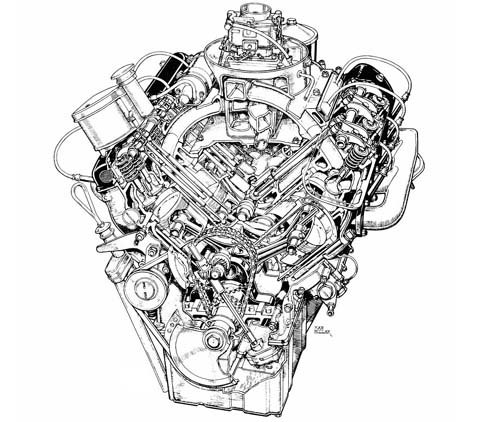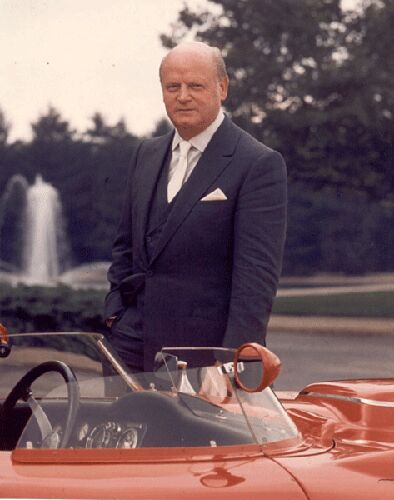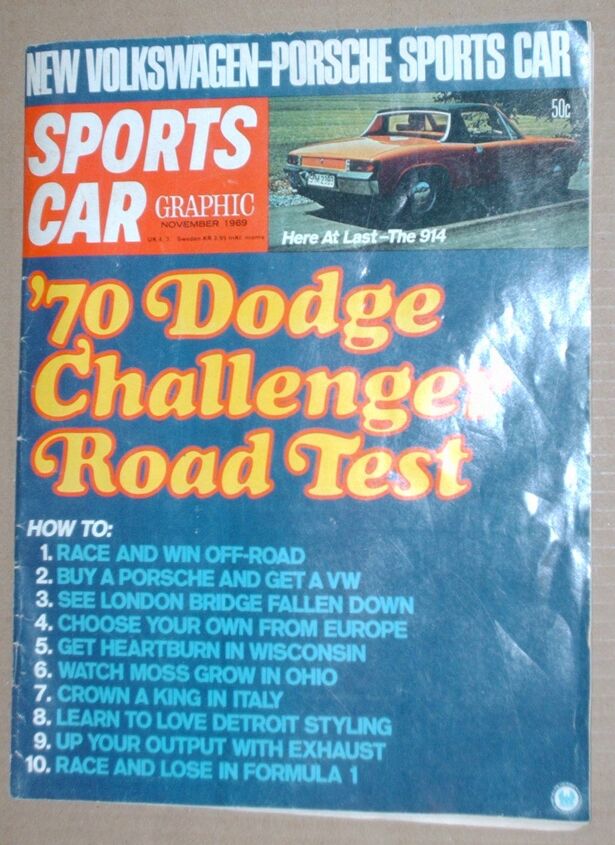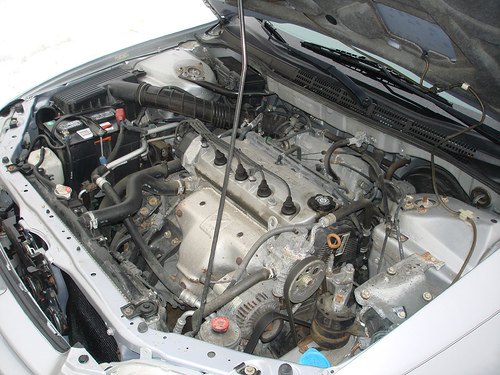#nostalgia
Good Night Sweet Six-Seat Sedan
The Freep’s Mark Phelan identifies yet another vanishing automotive phenomenon: the six-seater sedan. He notes
The Chevrolet Impala is the only six-person sedan you can buy. Other sedans — regardless of how big they are — have front bucket seats rather than the three-person front bench seat that was once common…
Chevrolet is weighing whether to build a six-seat version of the next Impala. Weighing against it, the car will probably be narrower than the current model. It’s based on GM’s Epsilon II global platform. It’s roomy, but probably not enough to fit three comfortably across up front.
About a quarter of Impalas sold last year were six-seaters…It probably makes sense for Chevrolet to concentrate on giving the next Impala a comfortable and attractive front seat that appeals to the other 75% of its buyers and wins some new customers.
I’m sure that front benches bring back a host of memories for TTAC’s Best and Brightest (mine is of grabbing the Hurst floor shifter in my dad’s 1966 F-100 with both hands and clunking from gear to gear on the way to the dump), and yet somehow I’m guessing that not many will agitate for its return. Like tape decks and carburetor tune-ups, the nostalgia of sitting between two other people in front seat might have a certain appeal in reminiscences, but anyone who actually transports six people regularly these days just buys a crossover. And guess what: the kids might be robbed of valuable future nostalgia (replaced by reruns of Spongebob Squarepants on the rear-seat entertainment system), but neither they nor their parents are likely to choose to go back. And so, we march onward, into an unfamiliar future…
Corvette Clip Out On The Urban Prairie
As a Detroiter I hate ruin porn. I particularly hate it when lazy journalists, bloggers, editors and video crews shoot photos or video, or worse, use stock footage and pics, of the Michigan Central Station and the old Packard plant. So I’m a little reluctant to share these photos that I shot just south of State Fair, east of Woodward. Ultimately, the photos were just too good, so emblematic of Detroit’s decay, that I had to share them. Also, it’s an opportunity to share some hope about the city.
Look At What I Found!: Packards Return to the Packard Proving Grounds Test Track – W/ Video
We’ve all seen too many pictures and videos of the magnificent ruin that was once the Packard plant on Detroit’s east side. It turns out that there’s a Packard site in the Detroit area that’s not a ruin, the Packard Proving Grounds in Shelby Twp. about 15 miles north of Eight Mile Road. Like the Packard plant on East Grand Blvd, Albert Kahn designed all the original Packard buildings on the proving grounds site, including a tudorish looking lodge where the facility’s manager and his family lived. It may be the only place where Kahn designed both residential and industrial buildings. It was built in 1927 at a cost of over a million dollars. Packard used the facility to develop and test their cars, aviation engines (there was a small airfield inside the big oval track – Charles Lindbergh visited the site), and also for publicity and marketing. The proving grounds even had a role in the Arsenal of Democracy. Chrysler used the facility during WWII to test Sherman tanks, erecting a building used to service the tanks that were tested inside the paved oval.
Additional video after the jump.
Debate Topic of the Day: Longest Production Run For Any Engine?
Here’s a question that may well be impossible to answer, due to the numerous gray areas involved. Sure, we could set all kinds of limitations (e.g., “production run” applies only to engines built by the original manufacturer) and of course you stumble into the quagmire of defining when changes to an engine design become significant enough to result in a different engine… but why should we do that?
Was GM Design Head Bill Mitchell A Sexist Bigot?
How I Lost My Fanhood and Learned To Love Cars On The Merits
The last time I attended a ball game, JFK was running for president. My older brother tells me that Mickey Mantle hit a homer. He would remember. Tom was a baseball fan.
I loved cars, not sports. At age six, I asked my mother to count the days until I could drive. I loved especially the elegantly maternal Mercurys. Nonetheless, I saw brands as classification systems, like the species of my beloved butterflies, rather than as foci for tribal loyalty, like my brother’s Yankees.
But fandom–the word derives from “fanatic”–is a holy grail of marketing, and I was not immune. At age nine, I sacrificed my objective appreciation of cars on Madison Avenue’s altar. In choosing my favorite car, loyalty trumped aesthetics. We had a Chevy.
Panther Appreciation Week: Defining Panther Love
As someone who has driven over 300,000 non-livery, private-owner miles in various iterations of Ford’s Panther, TTAC’s Panther Appreciation Week struck a bittersweet chord for me. I’ve enjoyed seeing this versatile vehicle-from-another-era get the admiration and respect I believe it deserves, and the peek at the other side of the philosophical coin – courtesy of some Best & Brightest commentators (and Paul) – has also been interesting. But this tribute to the platform’s imminent demise has saddened me, as it highlights how the Panther has represented such a stoic constant on North American roads for so many years. Regardless, change is the only true constant, and it won’t be long before the pride of St. Thomas Assembly is irretrievably crushed by the ever-advancing juggernaut of modernity. Standing at the precipice of this retirement, I feel compelled to look at what the Panther has meant, both in my life, and in the market over these past three decades.
The Cobra And The Cheetah: A Muscle Car Tale (Part Two)
Part One of this piece can be found here.
Were it not for an act of God, the fecklessness of General Motors’ executives and the difference between a self-promoting Texan and a Californian willing to walk away from it all, the many Cobras you see, real and ersatz, would be joined by another predator, Bill Thomas’ Cheetah.
Developed with backdoor assistance from Chevrolet, the Cheetah was the Chevy powered answer to the “Powered by Ford” Cobra. A racing Cheetah was given one of the first Gen IV big block 396 Chevy “rat” motors made. Based around Corvette drivetrain and suspension components, and a not very robust tube frame, the Cheetah was covered in a body that is unforgettable.
Though the Cheetah only competed in a small number of SCCA races, winning 11 events while simultaneously developing a reputation for extreme speed but treacherous handling (caused by the flimsy chassis), its drop dead gorgeous body styling made it instantly memorable. The fact that the Cheetah came out in the mid 1960s, when scale models and slot car racing were hugely popular with teen baby boomers, didn’t hurt the car’s popularity.
Magazine Memories: Dreams Of Delorean
TTAC readers, the Best and the Brightest, seemed to have liked the first Magazine Memories so I started to sort and organize the boxes of old buff books in the basement, with an eye towards another column for you guys. The first piece was about a Sports Car Graphic from 1969, a golden age for both performance cars and auto racing. I thought it would be interesting, by way of contrast, to look at an era of less worthy automobiles, the “malaise era”, so named because of a speech given by Jimmy Carter during his presidency that attempted to address a sense of national lethargy. Though Carter never actually used the word malaise, the tag stuck. Looking at magazines from the middle of the Carter years, the winter of 1980-81, though, the cars were so boring and mediocre that I thought it’d be too much of a challenge to even joke about how boring and mediocre they were.
Farewell Mercury
If you scan the autoblogosphere on a regular basis, you’ve read some half-hearted eulogies to the best and worst of Mercury. Fair enough, as the Mercury brand deserves every one of those backhanded compliments: sharing too much content with a comparable Fords and (sometimes) sharing too many styling cues with the Lincolns means it couldn’t die off without a dig or two. And it is an easy target: aside from the (lead-sled) post war Yuppie clientele that inspired Mercury’s creation, the original sleeky-Sable and a few old Cougars, this was bound to happen.
But obviously my love for Mercury ( here, here, and here) means I’m not going to bury Mercury, but to praise it. And to make sure the brand remains in our collective consciousness just as long as it’s GM counterpart, Pontiac. Wishful thinking, Mehta?
Magazine Memories: Sports Car Graphic, November 1969
In the basement are boxes of historic newspapers and old car magazines that I’ve saved since the late 1960s. The oldest items date to the Detroit Tigers’ 1968 World Series victory and the Armstrong/Aldrin moon landing the following year. The automotive publications are mostly from the early 1970s through the late 1980s, primarily Road & Track and Car and Driver from the US and CAR from the UK, plus a few odds and ends.
While looking for the newspapers on the moon landing I came across the November 1969 issue of Sports Car Graphic. SCG’s content was aimed more at the string-back glove set and road racing fans than Robert Peteresen’s other titles like Hot Rod & Motor Trend. I guess SCG was staking out a niche between C&D and Autoweek. I believe that TTAC contributor, Stephan Wilkinson was an editor at Sports Car Graphic during the 1970s so perhaps he can give us some historical background on the publication.
Picking up and reading a 40 year old car magazine evokes a range of thoughts and feelings. The physical object is both an artifact as well as historical source material. Certainly there’s a sense of nostalgia, as well as curiosity to look at the table of contents for cool cars. You read an old magazine differently than you’d read one that came through your mail chute today. If you still subscribe to C&D or R&T, you flip past the TireRack ads as fast as you can. With an old magazine you savor even the advertising copy, wondering if IECO still makes Corvair parts or even exists. Thinking Francophonically, there is an enduring sense not of déjà vu but rather of plus que change.
Inside General Motors, Circa 1999
Today, we’re setting the way-back machine for 1999 for an ABC “exclusive” behind the scenes of General Motors. Rick Wagoner is in charge, market share is dropping and the Aztek still hasn’t emerged from its camouflage. It’s a more innocent time, as evidenced by ABC’s breathless, toothless reportage, and it makes for good nostalgia and good schadenfreude. Does it get any better than that?
Adventures Under the Hood
I’d been wondering if I’d damaged the fuel pump when I ran out of gas a couple of months ago, for the only time in my 350,000-400,000 lifetime miles. Sometimes, after coasting in gear I’d feel the Accord 5-speed subtly hesitate as I gently pressed the gas. But this morning, the engine seemed to be gasping for fuel, and the check engine light–a species which is well known to cry wolf–was blinking at me as if it really meant it. Instead of to the espresso joint, I headed to the local mechanic.
The Monster
The man’s wife, an actress who looked Scandinavian, called it “The Monster.”
“You’ve come for the Monster,” she said.
“Yes, I have,” I said. Meanwhile trying to figure out why she would call one of Pininfarina’s most beautiful Ferraris– the GTC/4– “The Monster.”
I say “most beautiful” but the Italians, with their ever more refined eyes for body shapes (both women and cars) called it “the hunchback with clown lips” because it had an ever so slight rise to the center of the rear deck lid, and up front there was a rubber bumper surround. Neither feature hurt the car’s looks but you know the Italians. They wanted things just right or they would find something to criticize.
I found out later on, once I took the car, it ate money. It wasn’t the cookie monster, but the money monster.
Happy 80th Birthday, Steve McQueen
Terrence Steven McQueen was born to a stunt pilot father and an alcoholic mother on this day in 1930. His father left them both halfway to Steve’s first birthday. In the ensuing years he would find a home on his Uncle’s farm in Indiana, be moved to Indianapolis and L.A. where he was shipped off to a Junior Republic by an abusive stepfather, lumberjack, be a Marine guard for President Harry Turman’s yacht and become the highest paid movie star in the world.





























Recent Comments